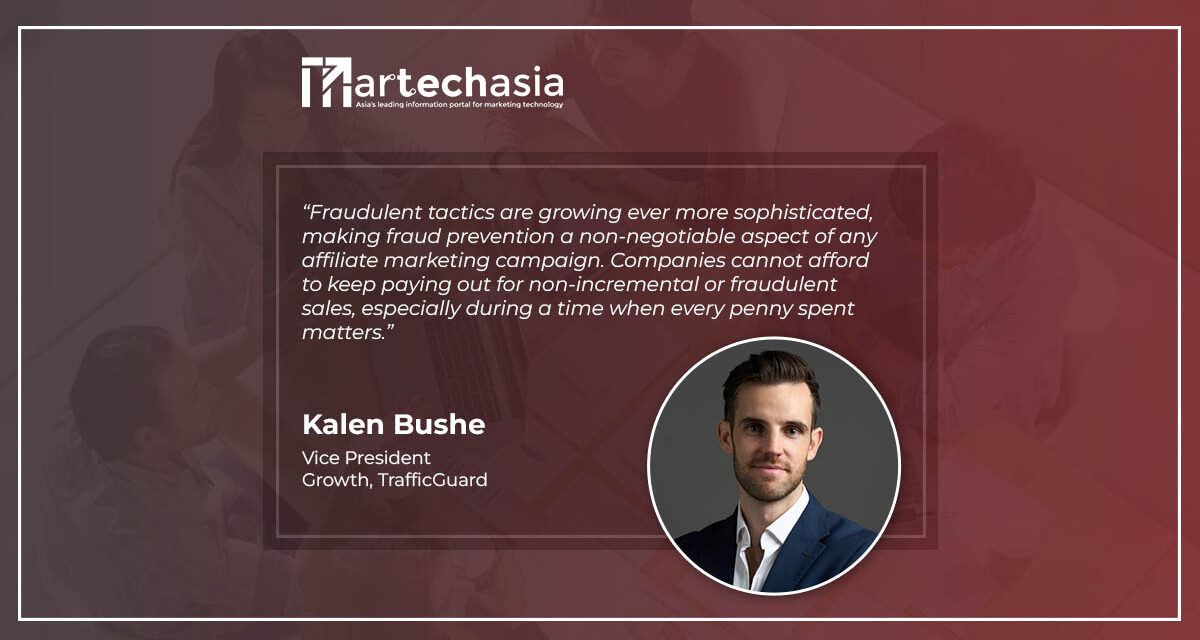Here are some strategies for increasing performance and precision – and addressing fraud – in affiliate marketing.
Attracting customers and increasing revenue is every business’s goal going into B2C campaigns. However, during a time of global economic uncertainty, budgets are being stretched, making every penny spent on advertising count. That’s why many are turning to affiliate marketing as a seemingly attractive option, due to its performance-based nature, meaning affiliate partners only get paid when they generate a sale.
According to a report by The Influencer Marketing Hub, global affiliate marketing spend is projected to reach $15.7 billion in 2024. The strategy is being widely adopted and is quickly becoming the advertising method of choice. Marketers need to better understand what’s involved and what’s at risk, with one major silent threat being fraud.
Affiliate fraud is diminishing performance results and standing in the way of marketers unlocking their budget’s true potential. At times when budgets are tight, but where the affiliate market is gaining traction, companies can’t afford to let this fraud go unnoticed.

Navigating the affiliate space
Standing as a cost-effective and simple way to promote a business across multiple channels, affiliate marketing provides opportunities for both marketer and partner to succeed. Due to being focused on increasing both customer base and revenue, it catches the eye of marketers looking to elevate their strategies.
But unfortunately, they aren’t the only ones aware of the profit. The amount of money on offer in the affiliate space means that fraud isn’t far.
On average, 8-12% of conversions within an affiliate program are subject to fraud or invalid activity. Affiliate fraud comes in many disguises and being aware of the tactics used is the fundamental first step in preventing campaign harm.
Cookie stuffing is one of the most common methods of fraud that could be causing detrimental losses. This entails fraudulent affiliates dropping third-party cookies onto an unknowing visitor’s web browser which makes the website believe they have generated genuine traffic to the site. When a sale is generated as a result, the affiliate claims they drove the commission and is paid by the company for it, when in reality, the sale would’ve happened regardless. Most of the time when this affiliate misattribution occurs, the user is unaware. So, although affiliates are injecting clicks and dropping cookies, it’s all happening in the background, and goes mostly undetected.
URL hijacking, a form of compliance fraud, is another popular technique among bad actors. An affiliate will use a very similar version of your URL to steal traffic from people who type the URL in wrong or don’t distinguish between the legitimate and fake site. The fake site then simply redirects the user to the real site via themselves, masking the source of their traffic so they can claim that they generated sales from these users.
Another form of compliance fraud follows a similar model to the one above, where affiliates bid on an advertiser’s brand terms on Google PPC. They then again re-direct these users to the legitimate site and claim they generated the sales. This typically breaches the terms and conditions of most affiliate programs, as well as driving up the PPC costs for the advertiser.
Another tactic that can breach the T&Cs of a program is what sites the affiliates are running ads on. Most programs prohibit their ads being shown in non-brand site environments such as adult sites, but savvy affiliates will often run the ads wherever they can get traffic, and then mask the source.
Fraudulent tactics are growing ever more sophisticated, making fraud prevention a non-negotiable aspect of any affiliate marketing campaign. Companies cannot afford to keep paying out for non-incremental or fraudulent sales, especially during a time when every penny spent matters.
Building effective deterrence
Clearly understanding the presence of fraud in the affiliate landscape helps when it comes to strengthening your defence. Now we have outlined what the market looks like and how your campaign budgets may be at risk, it’s time to walk through the ways in which you can mitigate fraud and achieve the best ROI.
Closely monitor traffic – Recognising suspicious activity by collecting a rich data set including IP addresses and referring URLs is a useful way to detect fraud early on. Monitoring gives you transparency into traffic and the ability to identify concerns such as an influx of traffic overnight, as they arise.
Assess terms and conditions – When taking on affiliate partners, it must be made clear within the terms that there is no acceptance of fraudulent practices. Starting out with these conditions clearly laid out puts you and the livelihood of your campaign results in a better position.
Make prevention a priority – Taking on fraud in the affiliate marketing space can be an overwhelming prospect to overcome alone. Bringing a trustworthy partner on board to implement long-term detection and prevention will ensure that any fraud in your affiliate programs is deterred.
Implement the right technology – Ultimately, a fundamental, long-lasting and reliable deterrence is onboarding a partner with the right technology. A partner who utilises machine learning and adopts a rule-based approach to analyse traffic and determine its validity in real-time will protect your affiliate programs and unlock the full potential of your ROI.
Taking back campaign control
With a plethora of benefits, affiliate marketing is quickly becoming a central aspect of many marketing strategies. However, it is for that reason that any aspects of revenue leakage are prevented so that businesses can keep a competitive edge in this time of economic uncertainty.
Tackling fraud head-on is the direction marketers need to go to protect budgets and ensure they are only rewarding authentic affiliates that generate legitimate sales. With a strong defence, affiliate campaign performance will be transformed, revenue will be increased and strong relationships between partners will be built. Enhance your reputation by setting on the right path to fraud-free campaigns.


















